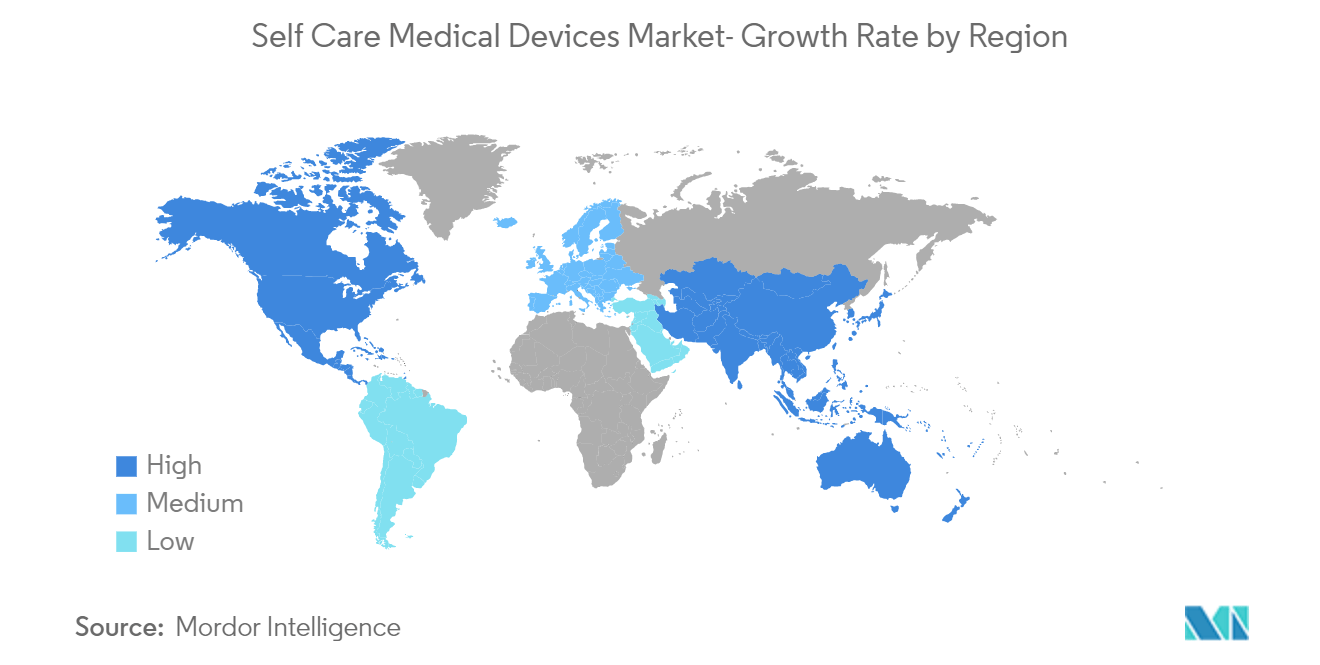Market Trends of Global Self Care Medical Devices Industry
This section covers the major market trends shaping the Self Care Medical Devices Market according to our research experts:
Blood Glucose Monitors Segment is Expected to Dominate the Market Over the Forecast Period
Blood glucose monitors had the largest market share when compared to other self-care medical devices. The number of people diagnosed with diabetes has been steadily increasing due to sedentary lifestyles, poor dietary habits, and the growing geriatric population. Furthermore, technological advancements and growing awareness about diabetes management are driving the market for blood glucose monitors to grow over the forecast period. For instance, as per the September 2021 report of the International Diabetes Federation, in 2021, approximately 537 million adults (20-79 years) were living with diabetes. The total number of people living with diabetes is projected to rise to 643 million by 2030 and 783 million by 2045.
The market players in the country adopted various strategies such as product launches, product developments, collaborations, and expansions to increase their market revenue. In July 2021, Terumo Corporation launched Dexcom G6 continuous glucose monitoring system in Japan. Dexcom, Inc., based in the United States, manufactures the product and Terumo holds the exclusive distribution agreement in Japan.
Similarly, in November 2021, The POGO Automatic Blood Glucose Monitoring System (Intuity Medical) was cleared by the Food and Drug Administration for people with diabetes aged 13 and up. In the United States, a new type of blood sugar monitoring system allows users to test with a single button press rather than finger-sticking or inserting test strips into a meter.
Thus, all aforementioned factors are anticipated to drive the segment growth over the forecast period.

North America Dominates the Market and Expected to do Same in the Forecast Period.
With the increase in product launches supported by the government authorities, the rising burden of chronic diseases and the increasing geriatric population are leading to a rise in demand for self-care medical in the United States.
The COVID-19 pandemic has changed the landscape of healthcare delivery in the United States, with a new shift toward self-care monitoring. According to a research article by Darren Roblyer published in the Journal of Biomedical Optics in October 2020, industrial and academic research projects use these devices to predict a variety of health outcomes and disease states, including surgical recovery, overall mortality, mental health, heart conditions, and other diseases states. Adding to that, in April 2020, during the COVID-19 pandemic in the United States, telehealth claims accounted for 20% of submitted medical and dental claims in the northeastern United States.
According to the National Diabetes Statistics Report updated in January 2022 published by the Centers for Disease Control and Prevention (CDC), around 37.3 million people have diabetes (11.3% of the United States population). Additionally, as per the same source, 28.7 million people, including 28.5 million adults were diagnosed with diabetes in 2021. Furthermore, according to the Statistics Canada Report titled 'Older adults and population aging statistics, published in July 2020, the number of people aged 65 years or over is about 6,835,866 in 2020. Since chronic diseases such as cardiac diseases have a high prevalence in the older population and have more chances to affect the older population, the burden of the geriatric population will drive the demand for patient monitoring systems, thereby boosting the demand for self-care medical devices in the region.
In addition, due to the high growth potential of the United States, the companies operating in the country are filing for new product approvals to have an edge over their competitors, which is further expected to augment the growth of the studied market in the country over the forecast period. For Instance, in January 2021, Omron Healthcare reported retail availability for HeartGuide, the first wearable blood pressure monitor. The highly-anticipated HeartGuide, an oscillometric blood pressure monitor in the design of a wrist watch, received 510K FDA clearance as a medical device.


